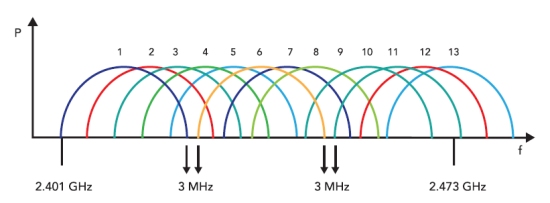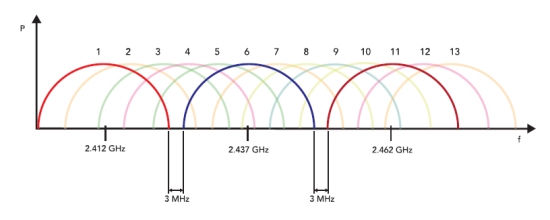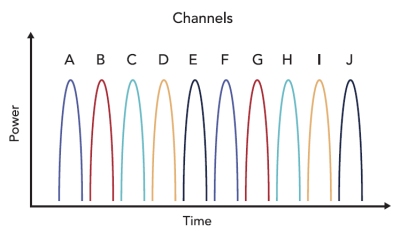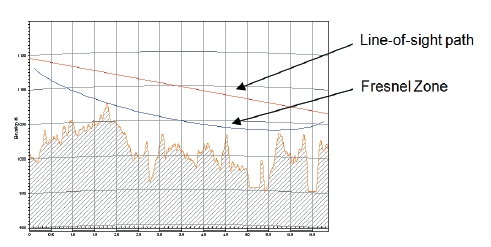Applying wireless to EtherNet/IP automation systems — Part 1
The ODVA EtherNet/IP network standard is gaining popularity as an industrial protocol, but while EtherNet/IP has many advantages, cable installation is often expensive, and communications to remote sites or moving platforms may not be reliable or cost effective. Wireless ethernet technologies have emerged that can now reliably reduce network costs while improving plant production.
Applying wireless technologies is not a simple matter, as industrial ethernet systems vary greatly in terms of bandwidth requirements, response times and data transmission characteristics. This two-part article will explore the application of IEEE 802.11a/b/g and proprietary frequency hopping wireless technologies to EtherNet/IP-based networks for industrial automation systems.
EtherNet/IP characteristics
Ethernet Industrial Protocol (EtherNet/IP) is a network protocol defined by the Open DeviceNet Vendor Association (ODVA). As an open standard, vendors may implement EtherNet/IP communications in their devices without licensing fees.
An important part of the EtherNet/IP standard is the definition of Common Industrial Protocol (CIP) messaging. CIP defines the information packet with recognition that the message attributes will vary as applications do. Thus, CIP message definition takes into account a wide range of applications including programming and diagnostics, data collection, PLC data exchange and I/O communications.
|
EtherNet/IP uses the standard seven-layer OSI model for protocol definition as shown in Figure 1. Implicit versus explicit messaging CIP defines two different types of connections. The first type is Explicit CIP which uses TCP for its communications protocol. Explicit messages are unscheduled and use a request/response communications procedure or client/server connection. Examples of explicit messaging include executing an MSG statement between PLCs and HMIs, device diagnostics and program uploads and downloads. The second type of connection is Implicit CIP. Implicit connections are time critical, are scheduled and use a requested packet interval (RPI) parameter to specify the rate at which data updates. |
|
Implicit connections use UDP packets for transmitting data over an EtherNet/IP network. The UDP packets are usually multicast if there are multiple consumers of the data. This multicast address is assigned by the EtherNet/IP interface and is unique for each tag. Multicast IP addresses are used to make the network more efficient because a producer of data can produce data for multiple consumers.
EtherNet/IP I/O blocks may support two major implicit connection types: direct and rack optimised. A direct connection is a real-time data transfer link between the controller and a single I/O module. Rack optimisation is a connection option where multiple discrete I/O modules in a chassis can be consolidated to use a single connection. Analog modules typically cannot be rack optimised and each analog channel uses a separate CIP connection.
Proper network design is critical for implicit networking systems in order to achieve predictable ‘deterministic’ I/O performance and to ensure that I/O traffic does not leak outside of the automation network causing network degradation. ODVA recommends specific design strategies to ensure optimised network performance such as segmentation (isolating subnetworks), the use of managed layer three switches (IGMP snooping and multicast packet filtering) and high-speed network infrastructure (100Base-T or faster). Wireless design is particularly critical as the wireless media is by nature slower than wired networks.
The value of wireless EtherNet/IP
While EtherNet/IP networks grow in popularity, ethernet infrastructure is not always easy, practical or cost effective to install. The proper implementation of wireless ethernet can reduce costs and in many situations improve reliability and increase plant production.
Wireless as an alternative to cable installation
The cost of installing cable in industrial plants is a function of the material costs plus the labour charges. Factors that impact total cable installation costs include:
- Distance and number of locations
- Conduit design and installation
- Trenching
- Fibre-optic cable and infrastructure
- Hazardous location regulations
Once the total cost of cable installation is calculated, a comparison can be made to wireless. Similar to cable installation though, the total cost of wireless should be examined. This not only includes the wireless hardware (including wireless nodes, antennas and cables), but also antenna installation (if applicable) and personnel training. However, even when factoring in these additional costs, the savings realised by wireless are often dramatic and significant.
Additionally, wireless (when implemented properly) offers better reliability than cabled systems because there are fewer mechanical connections to fail. If the cable is broken by moving equipment, severed during construction or damaged by vibration, production may be down for hours until the problem is located and corrected. Wireless also offers electrical isolation, eliminating potential surge damage from ground plane transients.
Finally, a significant benefit of wireless is reducing project time. Wireless systems are typically much quicker to install than wired systems.
Wireless in motion
Where wireless can significantly benefit production is in processes using motion such as material handling systems where controllers and I/O are on moving platforms. Examples include overhead cranes, transfer cars, stacker/reclaimer cranes, automatic guided vehicles (AGVs), conveyor systems and rotating packaging machines.
Mechanical methods of ethernet communications such as festoon cable systems, flex cable, slip rings and rails are prone to frequent maintenance and sudden failures. These systems are often relatively expensive, especially when supporting ethernet.
Industrial wireless considerations
TCP/IP or UDP/IP
Before selecting the wireless technology, it is important to consider the EtherNet/IP application and determine if it will be based on TCP, UDP or a combination of the two. This is important because TCP and UDP protocols behave differently over wireless networks. Ultimately, the automation architecture will determine the EtherNet/IP protocol type and appropriate wireless technologies.
Proprietary FHSS versus 802.11 DSSS/OFDM
The most common approach to wireless ethernet is RF transmission in the spread spectrum bands. Globally, the 2.4 GHz and 5.8 GHz bands are available for licence-free use in most countries.
|
There are three major methods of spreading RF energy: direct sequence (DSSS), orthogonal frequency domain modulation (OFDM) and frequency hopping (FHSS). Each method has advantages and disadvantages for industrial wireless communications. Direct sequence and OFDM uses a wide channel within the band to simultaneously modulate a highly encoded bit pattern (see Figure 2). Direct sequence and OFDM offer the fastest spread spectrum data rates as the wide channel permits transmission of complex modulation schemes. OFDM uses a complex modulation technique and is capable of high data rates and low latency. OFDM is also significantly more immune to multipath fading, a problem due to RF reflections that high data rate systems frequently have. |
|
Direct Sequence and OFDM are the methods used by all popular open Wi-Fi standards today including IEEE 802.11b, 802.11g (both transmitting in the 2.4 GHz band) and 802.11a (transmitting in the 5 GHz band). While the wide band modulation offers high speed, it unfortunately is more prone to noise problems when multiple systems are operating in close proximity. For example, IEEE 802.11b/g has 13 available channels (11 channels in North America), but only three channels don’t overlap (see Figures 3 and 4).
|
|
|
|
Due to overlapping channels and the popularity of Wi-Fi systems in plants, band crowding and RF saturation can lead to poor wireless performance.
Frequency hopping is a very popular technique for industrial systems because it has outstanding noise immunity. Unlike direct sequence and OFDM, frequency hopping uses many smaller channels in the spectrum and rapidly changes channels or ‘hops around’ from channel to channel (see Figure 5).
|
|
Frequency hopping has a high RF energy per bit ratio, and by incorporating error correction techniques, frequency hopping offers the best chance for successful data transmission as the transmitter will send the packet over and over again using different channels until an acknowledgement is received.
The disadvantage of frequency hopping is that it is slower than direct sequence/OFDM and has longer data latency. Most frequency hopping systems are limited to a data rate of 1 Mbps or less. But if the data rate is fast enough for the application, the reliability of frequency hopping is tough to beat especially in high noise environments.
Most industrial frequency hopping modems are proprietary, meaning that each manufacturer uses their own technique and vendor X will usually not communicate with vendor Y. While this is potentially a disadvantage for commercial systems, it can be desirable for industrial systems for two reasons - security and isolation from the wireless IT system.
Because industrial frequency hopping technologies are not typically based on an open standard, the manufacturer can use unique authentication processes and sophisticated encryption techniques to ensure very high levels of security. Other security techniques include cryptographic encryption, key management and rogue access point detection providing a high degree of security just as frequency hopping systems provide.
Frequency hopping also offers plant managers the ability to operate their own wireless network separate from the IT department. Because of the popularity of 802.11 technologies for wireless network access, warehouse bar code systems and video surveillance, proprietary frequency hopping systems may be the best choice for industrial systems and keep the peace between department managers.
Frequency band selection
There are many considerations when selecting the frequency band for EtherNet/IP communications including required data rate, distance, line-of-sight obstructions, modulation technique, band availability (government regulation) and band saturation (crowding). There are also spectrum management issues to consider if wireless is already in place or planned for the future.
Generally, frequency band and range (distance) are inversely related; ie, the higher the frequency the shorter the range (all other factors being equal). However, data rate and frequency band are directly related; ie, the higher the frequency, the faster the potential data rate. Data rate and distance are the first major considerations in frequency band selection.
The other major consideration is band usage and management. Many industrial plants use 2.4 GHz extensively for IT and inventory systems. Therefore, the 900 MHz band (for slower speed systems) or 5 GHz band (for higher speed) may be the best choice for industrial wireless systems.
Importance of line-of-sight
Along with distance, antenna placement is a key consideration. Spread spectrum systems always perform best with clear, unobstructed line-of-sight (LOS) between antennas. If there are obstructions (such as metal structures, concrete walls/floors or trees), then communications will be impeded. In many industrial systems though, obtaining clear LOS may not be practical or possible. Fortunately, the lower frequency 900 MHz band offers relatively good reflectivity and penetration characteristics. Using frequency hopping techniques in the 900 MHz band offers the best chance of providing reliable data transmission in applications without clear LOS though at relatively slower speeds. Applications without LOS should always be thoroughly tested before being implemented.
For longer range, outdoor systems, clear LOS between antennas is even more critical. Additionally, RF transmission theory dictates that the earth can reflect the signal in such a way to improve or impede it. A buffer zone in between the earth and the LOS is also needed for maximum signal levels. This area is called the Fresnel Zone (Figure 6), and is important when engineering the antenna system, particularly antenna height.
|
|
Multipath interference
Multipath interference is caused when the directed and reflected signals arrive and combine with different delays and amplitudes (see Figure 7). The delayed signals are produced by reflected and scattered signals arriving at the receiver from different paths resulting in propagation delay. These additional signals may cancel the original signal completely (called multipath fading), or may be combined by superposition to create delay at the receiver. This delay is referred to as delay spread and is defined as the difference in propagation delay between the directed (LOS) signal and the reflected signal. The tolerance of the delay spread varies among different radio manufacturers; often lower cost radios will have a lower tolerance and are more susceptible to multipath issues.
|
Typically, large open areas with reflective surfaces, such as metal, are more prone to this phenomenon. But some wireless technologies are more prone to multipath fading issues than others. Frequency hopping systems are nearly immune to this problem, while older direct sequence modulation is very prone. OFDM is much better at handling multipath than direct sequence, so is a good choice when needing high-speed data transfer. 802.11-based systems may also offer the option for a second receive-only antenna. By mounting a second antenna a few inches away from the main antenna, the radio receiver can determine which signal is best to use. This is referred to as ‘antenna diversity’ and is one way to reduce multipath problems. Sometimes making just slight adjustments to antenna positions in systems experiencing difficulties can dramatically reduce problems as well. |
|
Contention
In most working environments these days, there are other wireless devices of some kind in use. The IEEE 802.11 specification makes it possible for these devices to work well in the same proximity as each other. Contention is the ability to capture the RF channel, use it and share it with other RF devices on the same frequency. If there are too many transmitters on the same frequency, contention can be an issue since getting on the channel may be difficult and time consuming as other users contend for it as well. CSMA and CCA (carrier sense multiple access and clear channel assessment) is the collision detection mechanism used to ensure no two radios on the same channel transmit at the same time.
As previously discussed, frequency band management and channel allocation is good practice to ensure dependable wireless performance. This is especially crucial when wireless is applied to high-speed I/O systems. Dedicated ‘clear channels’ are best for these demanding applications and ensure reliable coexistence of multiple RF systems.
Interference
Many plant engineers are concerned that emissions generated by industrial equipment may interfere with wireless systems. DSSS, OFDM and FHSS are all quite capable of reliable transmission in ‘noisy’ industrial plants where variable frequency drives (VFDs), high-voltage substations and even arc welders are in operation. Most interference problems are the result of other wireless systems operating in the same band or channel, and not from industrial equipment.
In Part 2
In Part 2 of this article we will look at what specifically needs to be considered for running EtherNet/IP over a wireless network.
*Gary Enstad has a BS in Electrical Engineering and has been involved in wireless design and technical support for over nine years. His current role is Wireless Application Development Engineer for ProSoft Technology.
*Jim Ralston has been involved with the design and support of industrial wireless systems for over 12 years. He is currently the Northeast Regional Sales Manager for ProSoft Technology.
ProSoft Technology
www.prosoft-technology.com
Industrial wireless networks — comparing the standards: Part 2
In Part 1 of this article, we reviewed the history of wireless sensor networks (WSNs) and defined...
Industrial wireless networks - comparing the standards: Part 1
Today wireless instrumentation is becoming more commonplace in process plants and is a more...
Modernise and maintain: implementing wireless to monitor beyond the P&ID
Many operational and maintenance problems around a plant can be solved by deploying WirelessHART...
















